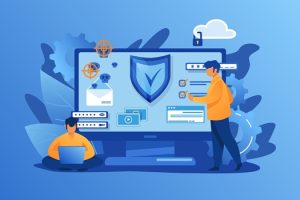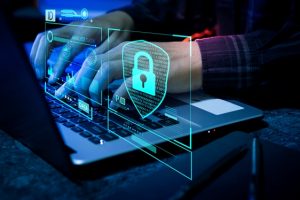Computer Security Day – Keep your organization safe from Cybercriminal
Computers have become part and parcel of our lives, with almost every organization depending on the usage of computers for their daily operations. Life has become simpler, the world is now a global village, businesses are booming, thanks to the revolution that has taken place in the computing field. However, this has come with a myriad of challenges, and the greatest one of them being cyber security. As computer usage has grown over time, so has the threat of cybercrime. The 30th of November is the Computer Security Day, that special day when we can all remind ourselves of the fact that cyber security is an essential part of every organization, big or small, and that all of us have a role to play in ensuring that the confidentiality, integrity, and availability of information is protected. In this day, we create awareness on the existing issues in cyber security and those we are likely to face in the future.
Since this day is all about awareness creation, here are some of tips on how we can commemorate this important day this year:
a.) Password Hygiene– passwords are the first line of defense in information security. It is important to use complex passwords and protect it from misuse. A good password should be long, complex, and unique. It should also be changed regularly. Here are a few tips for creating and maintaining strong passwords:
1. Use a password manager. This will help you create long complex, and unique passwords for all your different accounts.
2. Avoid using dictionary words, proper names, or easily guessed words.
3. Include a mix of uppercase and lowercase letters, numbers, and symbols.
4. Make sure your passwords are at least 8 characters long.
5. Change your passwords regularly, at least every 3 months.
6. Don’t use the same password for more than one account.
7. Avoid writing your passwords down. If you need to, make sure they’re stored securely.
By following these tips, you can help ensure that your passwords are strong and secure.
b.) Use of Multi Factor Authentication (MFA) – strong passwords are good, but they are not a silver bullet; users should never take chances since even the most complex passwords can still land into the hands of cyber criminals. It is recommended that users embrace MFA which brings an additional layer of security to ensure that your data is safe. MFA uses attributes such as something you are, something you do, something you have or something you know.
c.) Least Privilege and Need to Know Basis access – In order to protect your business, it’s important to implement a least privilege and need to know basis access management system. This system will ensure that only authorized users have access to sensitive data. By restricting access to only those who need it, you can minimize the risk of data breaches and other security threats. The first step in setting up this system is to identify which users need access to which data. Once you’ve done that, you can set up permissions so that each user only has access to the data they need. You can also set up auditing so that you can track who is accessing what data. This is an important security measure that can help you prevent data breaches and other security threats.
d.) Employee training – since employees have become an easy target for cyber criminals through attacks such as phishing and social engineering, it is important to conduct employee awareness and education on the tenets of cyber security and their role in ensuring that information is protected. This also reduces risk of human error.
e.) Conduct Vulnerability Assessment and Penetration Testing on a perpetual basis – the cyber security field is always changing and every single day we are confronted with new threats. Vulnerability assessment and pen testing will help uncover these loopholes well in advance and enable you to take the necessary security measures to avoid future attacks.
f.) Data Encryption and backup – encryption is a very powerful tool you can use to secure your data since when encrypted, information is only readable to someone that has the decryption key. Backup also comes in handy in cases where you lose access to your original data, you can always have a place to begin from.
g.) Patching – it is important to ensure that you’re applying the latest patches as they come in. Security patches help seal vulnerabilities that could be used as potential entry points to your system.
h.) Use of firewalls – firewalls come in very handy by preventing unauthorized internet traffic from accessing your network. They keep your devices safe.
The Computer Security Day is here to remind our responsibilities that the security of our information is guaranteed and that organizations have a well-established cyber security structure which can detect and prevent any cyber-attack.


